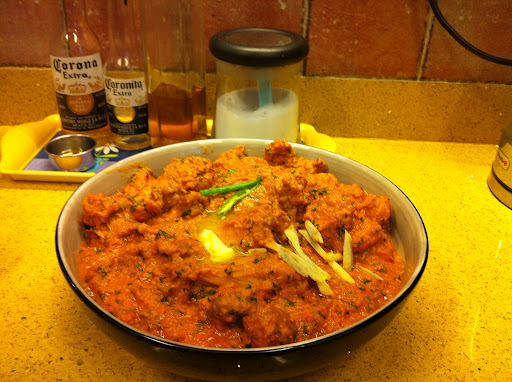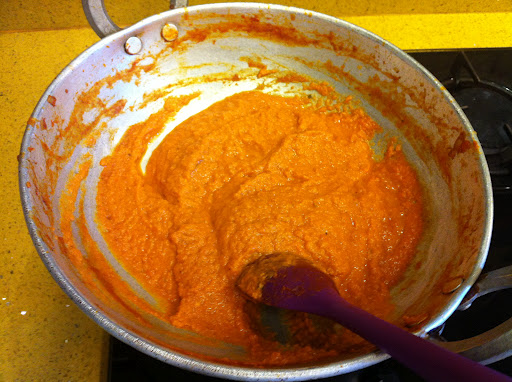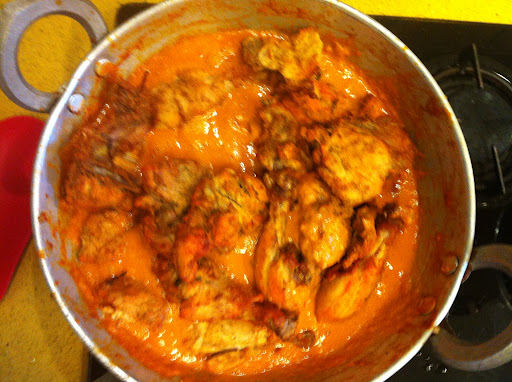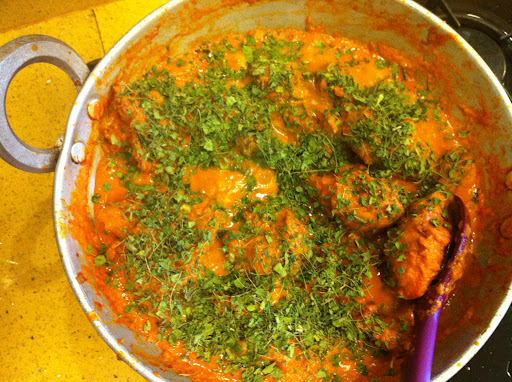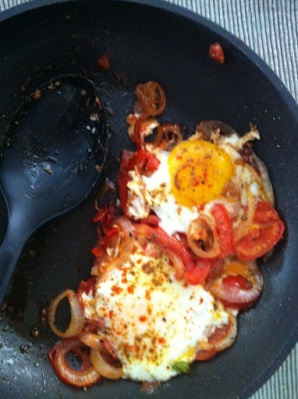Anywhere in India you go, there is one part of the cuisine that is a broth or refreshment that is tangy, pungent, fragrant and is created with perhaps the sole purpose of getting us to breathe deeply and expressing a warmly satisfied sigh. I count the masala nimbu soda as one such. And I had sworn once that if I could get ‘kanji’ to drink every evening, then I would give up alcohol in favor of that rye & carrot fermentation.
Rasam. Another one in that list of liquids.
A couple of months ago, I had noticed some Rasam recipes in good food and had’nt really paid heed. Then some weeks ago, out of boredom, I tried one out – and hey! Surprisingly good results. Today, I heard the maid complain of some extra Rasam powder that had been delivered; so I read that as a sign and started out again.
Wonderful result!! And this took about 15 minutes and 1 pint of Kingfisher.
What I had to get together quickly
3 ripe tomatoes | blanched, peeled and pureed in a blender
1 tsp cumin powder
1 tsp mustard seeds
1 tsp asafoetida (hing)
1 tsp turmeric (haldi)
salt to taste
12 leaves of curry patta
1 green chilly | broken into 2 or 3 pieces
4 pods of garlic | grated
A packet of Rasam Powder | easily available at most stores, but also quite easy to assemble
4-5 cups of water | in which I had blanched the tomatoes
2 nice large balls of tamarind | soaked in warm water, squeezed & drained to give you a cup of tamarind pulp/water.
And away we go.
Take a deep pan, heat a couple of teaspoons of oil, and gently fry the mustard seeds, cumin powder and garlic together. Add the curry patta & green chilly and fry the leaves a bit as the fragrance develops. Immediately after, put in the pureed tomatoes, the tamarind water, the haldi and the hing. Let this cook and boil over for 3-5 minutes. When the puree & masalas looks well cooked and some oil’s separated, add 3 tbsp of the rasam powder.
Once everything is well blended, add the water and salt to taste and let boil for a few minutes.
Serve as in an earthen mug, or with rice. I love it both ways and usually end up doing a couple of cups of Rasam each way!
If you love Rasam as much as I do, you will end up finding out more about it; and it may surp you as it did me that there is quite an amazing variety of rasam’s you can make. The basic tenets of jaw dropping spiciness, fragrance and watery texture remain the same of course, but tomatoes, coconut milk, toor dal, dry red chillies, pepper and their many combinations can create some wonderful variations.
This variation above I can call my own. I read a bit, and picked from Good Food of course, but made many amendments of my own. This exact dal-less version is the one I like the most. Um. OK – So far.


